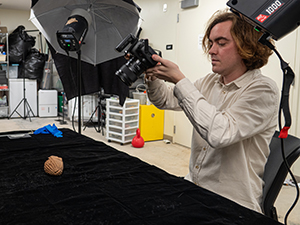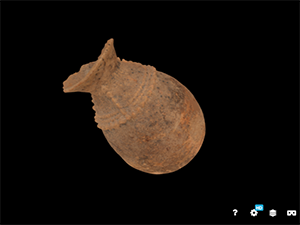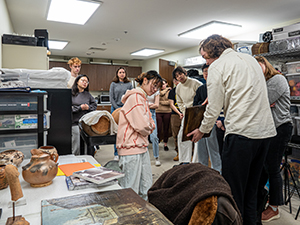Focusing on Photogrammetry

At the beginning of the spring semester, the Lam Museum, with support from the Wake Forest Interdisciplinary Arts Center, Wake the Arts, and the Art and Antiquities Blockchain Consortium, hosted Dr. Ferdinand Saumarez Smith of the Factum Foundation. The focus of his visit was using photogrammetry to build 3D models of seven Bura artifacts in the Lam’s collection. Photogrammetry involves taking hundreds of overlapping photographs of an object from many different angles. These are then processed with specialized software that recognizes common features between the images and “stitches” them together into a digital 3D model. This model can be easily shared and transmitted around the world, or even recreated through 3D printing or milling techniques. Factum Foundation leads in the application of this technology to repatriation cases in Africa and throughout the world.

The 3D models of the Lam’s Bura artifacts will be combined with blockchain codes enabling future authentication by providing an unalterable record of the movement of the objects, supporting the Museum’s goal of repatriating the artifacts back to their source country of Niger. More than 190 Wake Forest students from across disciplines had the opportunity to participate in the scanning and learn more about the digital replication process while also thinking through the ethics and legal frameworks for repatriation.

Dr. Saumarez Smith’s visit inspired Wake Forest students to conduct their own research. This summer, the Lam Museum is hosting two student research projects on photogrammetry. Engineering student Max Schellhammer received funding from the Undergraduate Research and Creative Activities Center (URECA) to continue working with Bura objects. He will optimize our methods to conduct effective and efficient photogrammetry with the remaining pieces in the collection. Anthropology student Annelise Witcher was awarded a Wake Forest Research Fellowship from URECA to conduct research on how photogrammetry can support accessibility. Her work will result in a new virtual exhibit featuring 3D models of museum objects.

